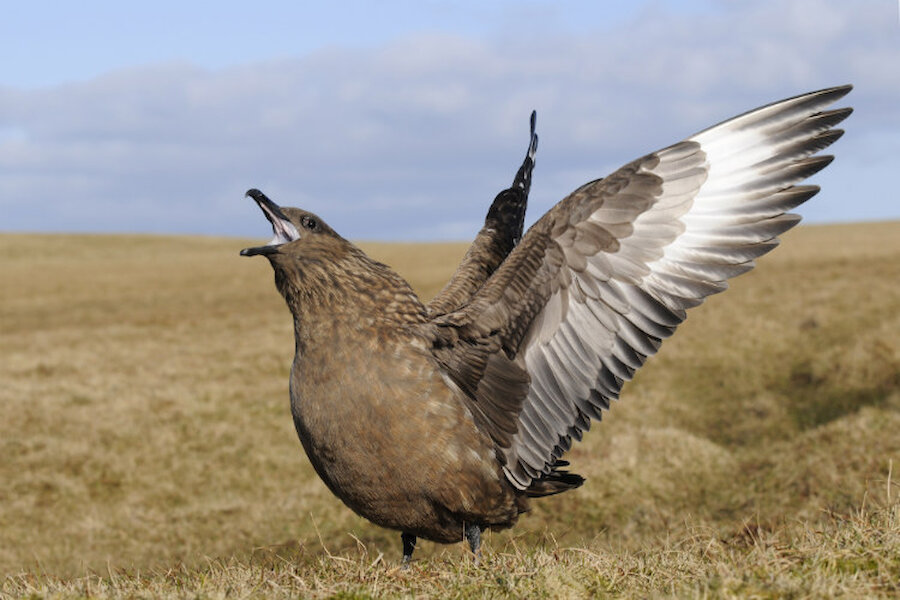With a breeding population of somewhere in the region of 7,000 pairs, Shetland is home to over 70% of the British population and about 40% of the entire world population of Great Skua. There is little doubt that the "Bonxie" is the most controversial of breeding species amongst crofters, conservationists and fishermen alike.
In Shetland and indeed pretty much where ever they breed, Bonxies are at the top of the food chain. They are certainly a powerful, intimidating and ruthless predator. Typically skuas tend to be opportunists and scavengers that harass hard working seabirds and rob them of their catch. Gannets are of course one of their favourite targets and around many breeding colonies make up the large majority of their and their chicks diets. They are perhaps best known for their fearsome intimidation tactics on the breeding grounds. 'Dive bombing' at high speed making a direct line for your head and only just veering off with in inches of contact is indeed quite an effective warning that you are not welcome! It is not unusual for really aggressive birds to clip you with trailing feet or a wing tip.
But Bonxies do not stop at just that; they are notorious and infamous predators. From chicks off ledges in a crowded seabird colony to picking off Puffins from the cliff tops or even out of the air- many individuals become stealthy and resourceful predators. It has been known for just a few birds to wipe out entire colonies of Kittiwakes.
It is the Great Skuas presence in the "lambin parks" that has however in the past caused great controversy amongst crofters through out the Isles and with little wonder. With that said though, similarly to the predatory percentage of Bonxies, only a few will take livestock. Never the less, a few can often have a serious impact on newborn lambs especially.
Going back a couple of hundred years or more, it was a very different tale - Bonxies had an almost sacred status amongst fishermen and even crofters. They were once known to see off the mighty White-tailed sea eagle which were then the menace to livestock!



